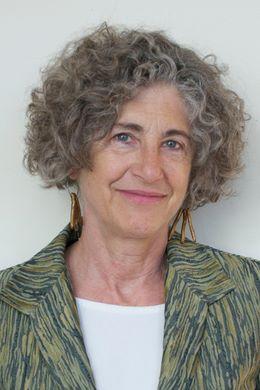
Professor Hillary Brown
Board on Infrastructure and the Constructed Environment Aims to Incorporate Disaster Resiliency Into Infrastructure Upgrade
The United States’ lifeline infrastructure – its energy, water, transportation and telecommunications systems – has long been an issue of national concern. In addition to upgrading its aging systems, America today faces the challenges of peak oil, national security and disaster resiliency.
Hillary Brown, FAIA, professor of architecture in The City College of New York’s Spitzer School of Architecture, was recently appointed for a three-year term to the National Academies’ Board on Infrastructure and the Constructed Environment (BICE). This expert body looks at questions of technology, science and public policy related to the constructed and natural environments.
An operating unit of the National Research Council’s Division on Engineering and Physical Sciences, BICE functions as an independent advisory organization to the legislative and executive branches of government and the private sector. Its members are drawn primarily from the sciences, engineering and the social sciences. BICE’s current focus is on the sustainability and resiliency of these critical infrastructure systems.
“America’s future infrastructure needs are dauntingly large, complex, and urgent.” says Professor Brown. “Our own economic stability and ability to compete long-term in a global marketplace rely upon upgrading these assets.”
As an architect, Professor Brown says she brings to BICE a perspective on integrating different disciplines involved in developing a more adaptive, environmentally sound approach. She teaches a course at City College on next-generation infrastructure that focuses on resilience, sustainability and multi-functionality, and she has written extensively on these topics.
“We must bring a holistic and integrative problem-solving approach to ongoing investments in energy, water, waste and transportation,” she says. In addition, interdependencies among critical systems need to be examined to find synergistic opportunities and options for closing loops in energy, water and material flows, she argues.
“Europe is ahead of the game in this regard, with environmentally advanced waste-to-energy systems, and processing bio-wastes from water treatment facilities and landfill for transportation fuel as two examples.”
BICE will engage in a variety of activities to address these challenges and disseminate new ideas. Among them, holding regional and national conferences and symposia to present best practices in policy and inter-sector planning, developing studies and convening workshops with experts to recommend solutions. The board intends to share its findings with the federal government as well as other organizations in the public and private sectors.
“We want to get the sectors to work better together. They have traditionally functioned in isolation,” Professor Brown says. Toward that end, BICE will review and highlight exemplary projects and programs done at the state or regional level. “We need to get public officials to understand the urgency of restoring vital infrastructure systems that have become debilitated.”
On the Internet
The National Academies Board on Infrastructure and the Constructed Environment
MEDIA CONTACT
Ellis Simon
p: 212.650.6460
e:
esimon@ccny.cuny.edu